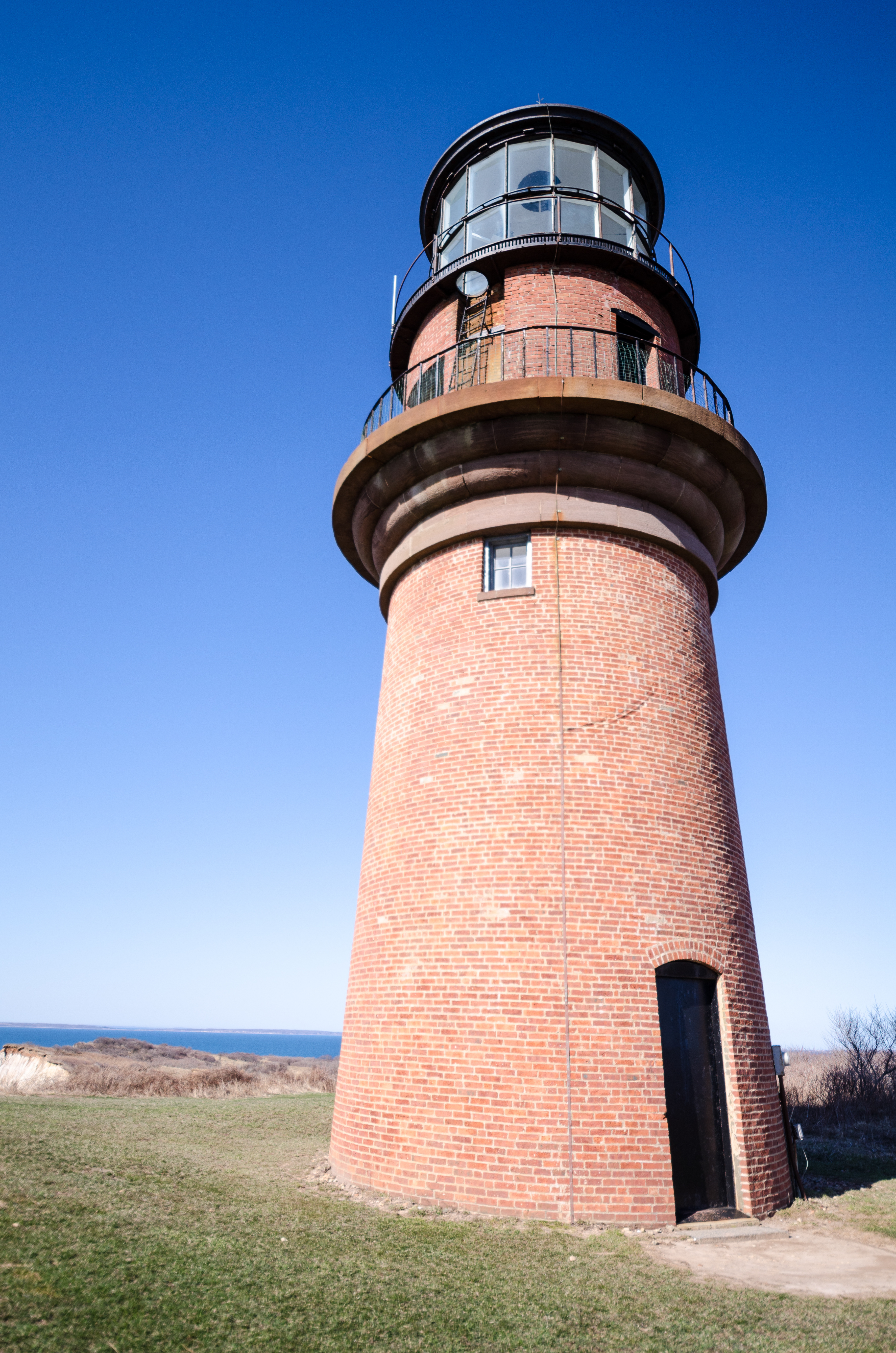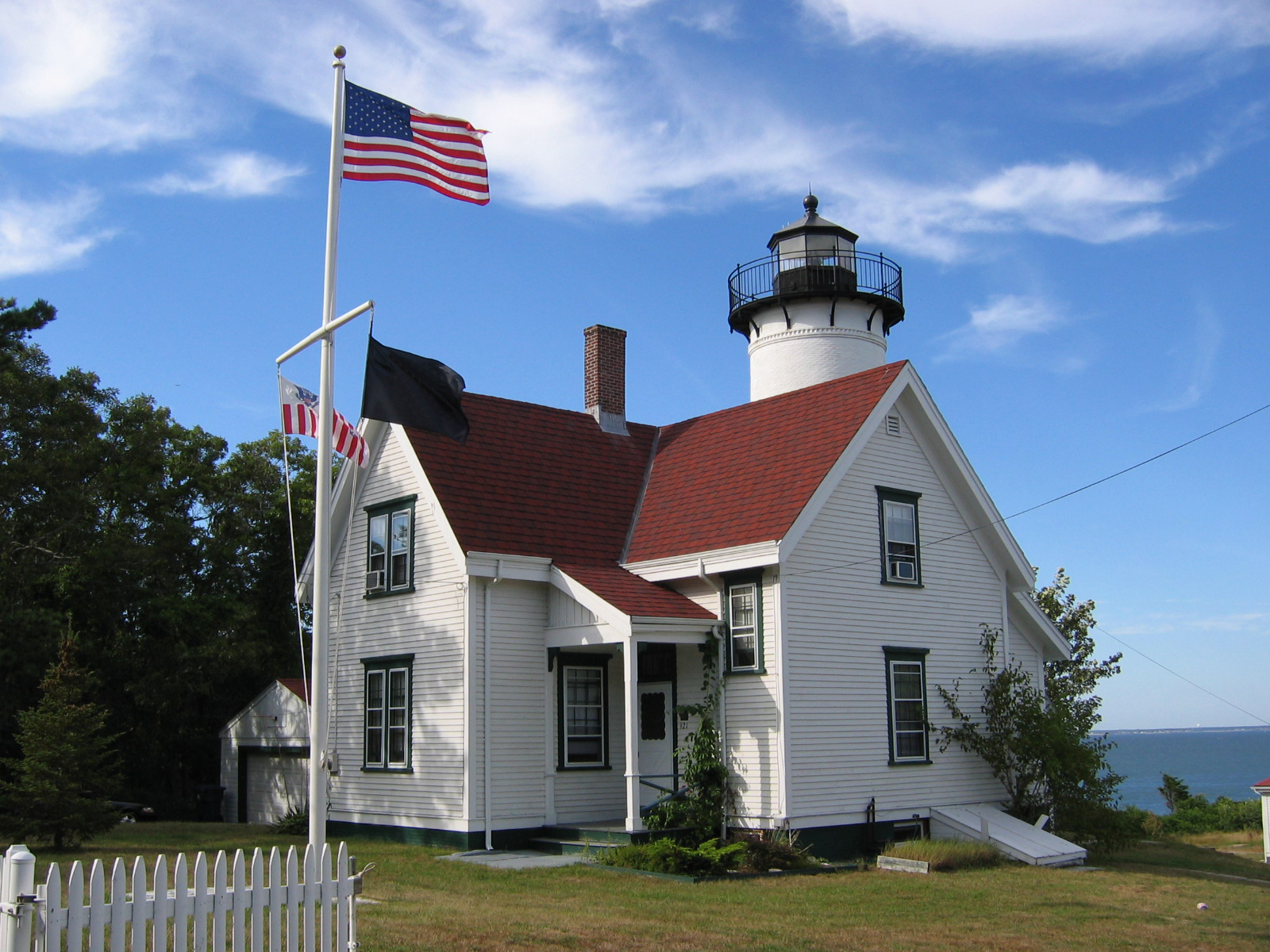
History of The Gay Head Lighthouse
The Gay Head Light holds the notable honor of being the first lighthouse constructed on Martha’s Vineyard. In 1796, Senator Peleg Coffin suggested the construction of the lighthouse.
During this time, there was a healthy whaling industry off the coast of Massachusetts. Sperm whales were an important industry for the region. The oil harvested from sperm whales was highly prized for burning brightly and cleanly in the oil lamps of the day. The whalers needed the lighthouse on Gay Head because of a treacherous section of rocks called the “Devil’s Bridge.”
The construction and maintenance of lighthouses and other forms of navigation along the coast of the young United States was the responsibility of the federal government. Congress approved $570 to build the lighthouse. In 1799 the Commonwealth of Massachusetts deeded more than two acres of land for the building of the lighthouse. The contract for the 47 foot tall octagonal lighthouse with a keeper’s house was approved by President John Adams.
There was some concern, though, that whomever was given the position of lighthouse keeper would create issues in the local Wampanoag nation. The Wampanoag were, and remain, the ancestral owners of the land the lighthouse resides on. In the end, though, this was not taken into consideration in the choosing of the keeper.
The light first came on November 7, 1799. The first lamp was likely a multi wick “spider” lamp with a pan of sperm whale oil as the fuel. While sperm oil was considered the most clean fuel option for lamps at the time, the reality was that it still produced significant amounts of ash. An important part of the lighthouse keeper’s job was keeping the casing clean so the light could be seen from the water. There was also the issue of ensuring the light flashed on the correct pattern. This functioned via a wooden clockwork mechanism that would swell and stop functioning in the summer months. All this made the lightkeeper’s job very challenging.
With some upgrades to cleaner burning, more efficient parabolic lens lamps the Gay Head Light continued in operation until 1844 when it was determined that the clay cliffs had eroded putting the lighthouse structure at risk. The lighthouse was moved further back along the cliff at a cost of $386.87.
By the 1850s, though, the building was in such disrepair that the eroding cliffs were again threatening it. After an extensive 760 page report, it was determined that the old wooden structures needed to be replaced by stronger brick ones and the lamp would be replaced with the new Fresnel lens technology.
The Fresnel Lens was an impressive feat of engineering. In fact, when the Parisian firm, Henry LePaute, who built the lens, entered it in the 1855 Exposition Universelle and took away the grand prize. The Fresnel lens is so impressive because it uses prism technology to create a bright light with much less glass. It still weighed a ton and was very difficult to transport to Gay Head and up into the new brick tower. The new light was so bright that when it was first turned on, it was confused with other lighthouses along the coast. In 1874 red panels of glass were added to further distinguish it. This famously gave the flash pattern of “three whites and one red.”
Over this time, the fuel used to keep the lights burning underwent a series of changes. While the sperm oil was an appropriate choice, given that it was the result of the whaling industry the lighthouse supported as well as being clean burning, eventually its cost became prohibitive. The lighthouse moved on to the less expensive coiza oil (made from wild cabbages) then to lard oil in the 1850s. The 1870s and 1880s brought the innovation of Kerosene. Electrification did not come to Gay Head until 1954.
The next big change for the Gay Head Light was the replacement of the light keeper’s house in 1902. Over the previous decade, several of the lighthouse keeper’s children died under mysterious circumstances, later determined to be from the mold and mildew of the house. This necessitated the new structure.
In 1920, Charles W. Vanderhoop, Sr, a member of the Wampanoag nation, was promoted to principal lighthouse keeper. This is particularly notable as he was the only member of the Wampanoag nation to serve in that position.
The old Fresnel lens was in use until electricity finally made its way to the island in the 1950s. In 1952 the lens was moved to Edgartown, Massachusetts to be a part of the Martha’s Vineyard Museum. Because of his dedication, it was decided that Vanderhoop would light the Fresnel lens in the new exhibit.
From 1956-1985, the automated lighthouse was infrequently maintained by the US Coast Guard. There was a national push to decommission the old lighthouses. They were costly to keep in service and increasingly obsolete in a world of new maritime navigation aids like satellite GPS.
In the 1980s, the Vineyard Environmental Research, Institute’s (VERI) helped fight for the preservation of three lighthouses slated for demolition, including Gay Head. Help pushed along by Senator Edward Kennedy, in 1985 the US Coast Guard gave VERI the responsibility of the three lights for 35 years. Extensive preservation took place, pointing bricks and remediation of toxic mold eventually ending in the placing of Gay Head Light on the National Register of Historic Places.
In 2015, the lighthouse was once again relocated to accommodate the continued erosion of the clay cliffs It’s current location is expected to remain safe for the next 100 years.
There is evidence that the lighthouse was open to visitors from its very earliest days. It became even more of a destination after the addition of the Fresnel lens. As the building deteriorated and the public was less impressed with the Fresnel design, guests became much more of a rarity. After the transfer of ownership to VERI, though, the lighthouse was again open to the public on Mother’s Day in 1986. Since then it has opened to tourism in the summers, even being toured by President Barack Obama during his vacation on the Vineyard.
It is a continued challenge to keep the lighthouse open and operational. With an over two hundred year old property, there is a lot to be done to keep it around for future generations. The realities of the environmental impact of erosion and acid rain are a constant battle. This has been taken on by the Town of Aquinnah through the formation of its “Save the Gay Head Lighthouse Committee. The fight continues to raise the funds to keep this historic landmark alive.
Cape Cod Modern Tourism
People visiting cape cod today can still visit this historic lighthouse and take it it’s stunning views.
The lighthouse can be found at 65 State Road, Aquinnah, MA 02535, phone number 508-645-2300 (ext. 0).
The light is open to the public mid June-mid October daily from 10 am – 4 pm
Sunset viewing available Thursday and Friday nights from 6:00 pm – 8:00 pm
The light is not open when it is raining.
Accommodations Near Gay Head Lighthouse:
While there are no accommodations on site, there are several hotel options near the lighthouse.
The Outermost Inn and Duck Inn are quaint guest houses offering stunning views of the Atlantic ocean and a quick walk to the Aquinnah Public Beach. There are also a variety of rental properties available on Martha’s Vineyard proper.
Things to do near Gear Head Lighthouse:
An unique aspect of the Gay Head Light is the opportunity to learn about the Wampanoag who still reside on their ancestral land at Aquinnah. Near the lighthouse is a museum about Wampanoag history and culture.
No trip to the Gay Head Light would be complete, of course, without a visit to the Martha’s Vineyard Museum to see the Fresnel lens. The light received a new setting in 2019 so that modern visitors can see it in its full glory.
Restaurants near Gear Head Light:
Most of the food in the area is focused around seafood culture but there are plenty of options for everyone. Recommended dining establishments nearby are Chillmark Tavern, Orange Peel Bakery and Menemsha Fish Market.
Though the lighthouse itself does not offer tours, they do host a variety of events during the summer season such as a 10k race and sunset viewings.
The lighthouse is included on several general and lighthouse tours given by Martha’s Vineyard Tours and Excursions as well as the Martha’s Vineyard Museum itself.
Gay Head Light is a bit off the beaten path but it is well worth the trip. In addition to this historic lighthouse, the views of the Atlantic Ocean are not to be missed. In addition, the opportunity to visit the public beach and enjoy the natural rugged landscape can’t be beat. It is also a particular treat to the opportunity to learn about the lives of the Wampanoag and their civic relationship with the surrounding area.
